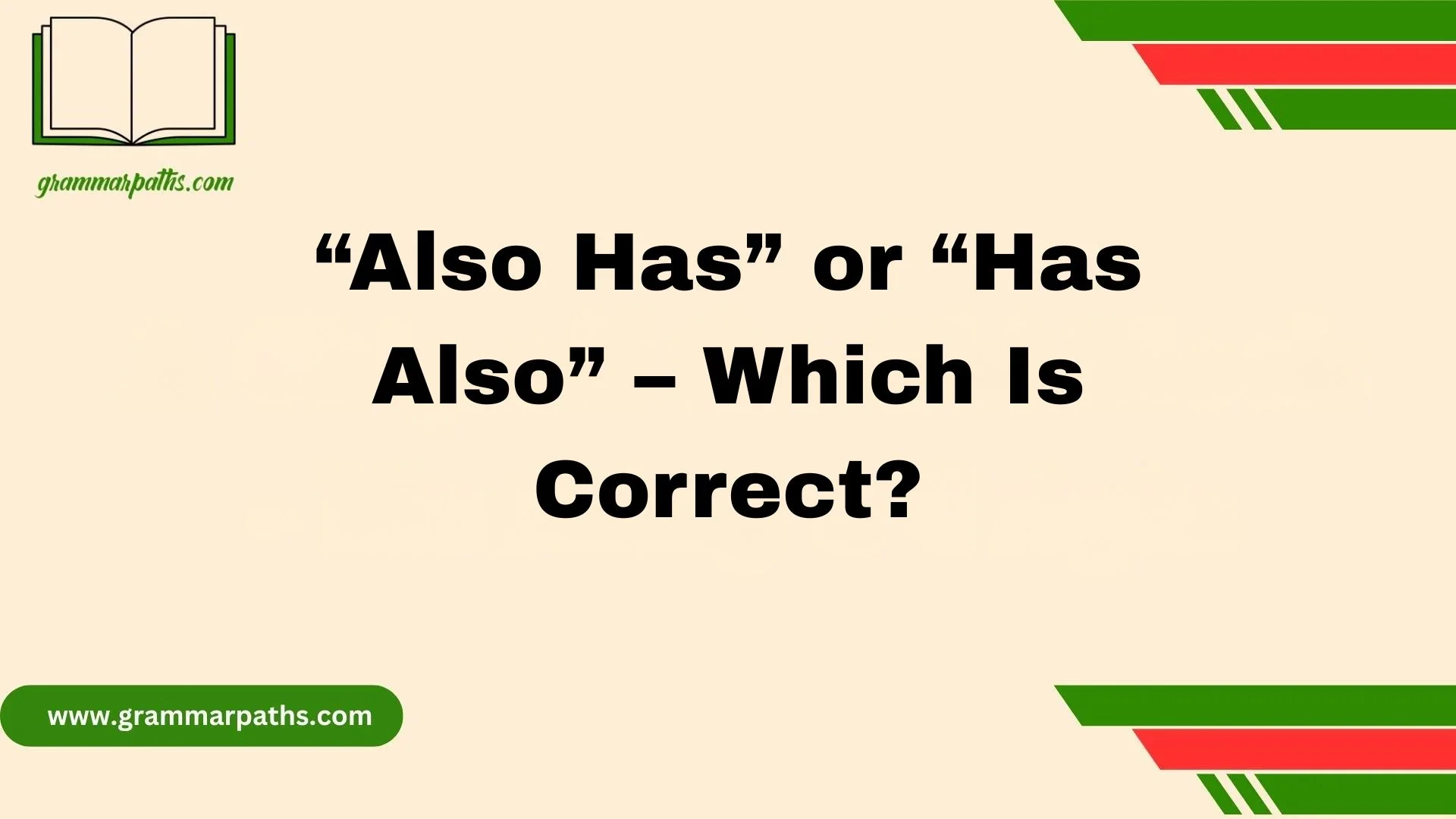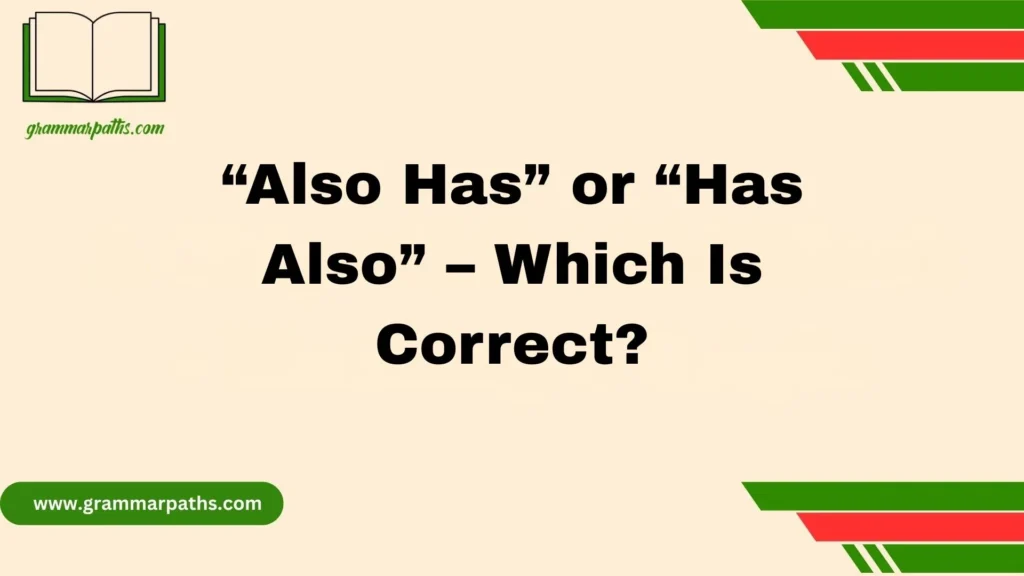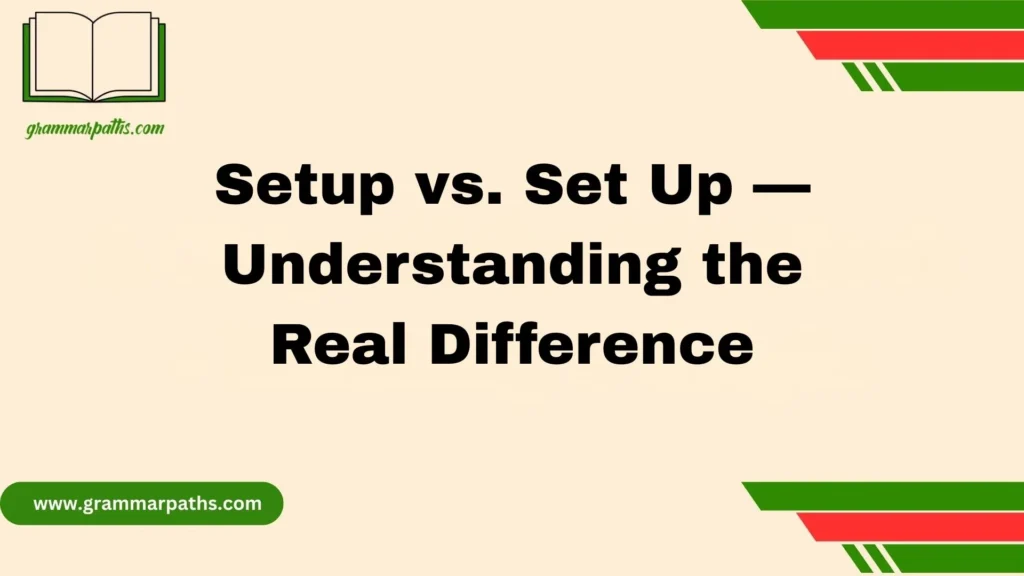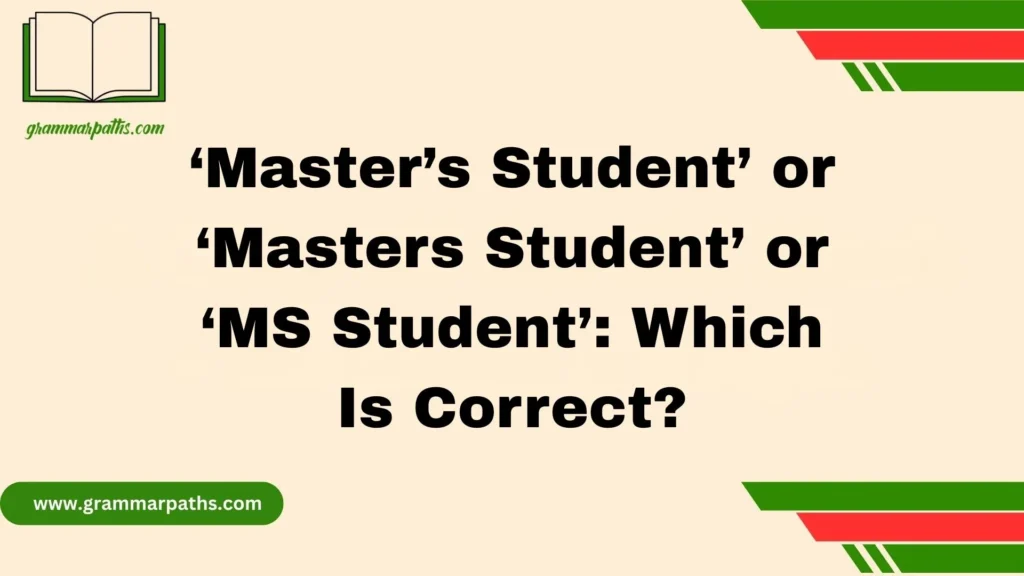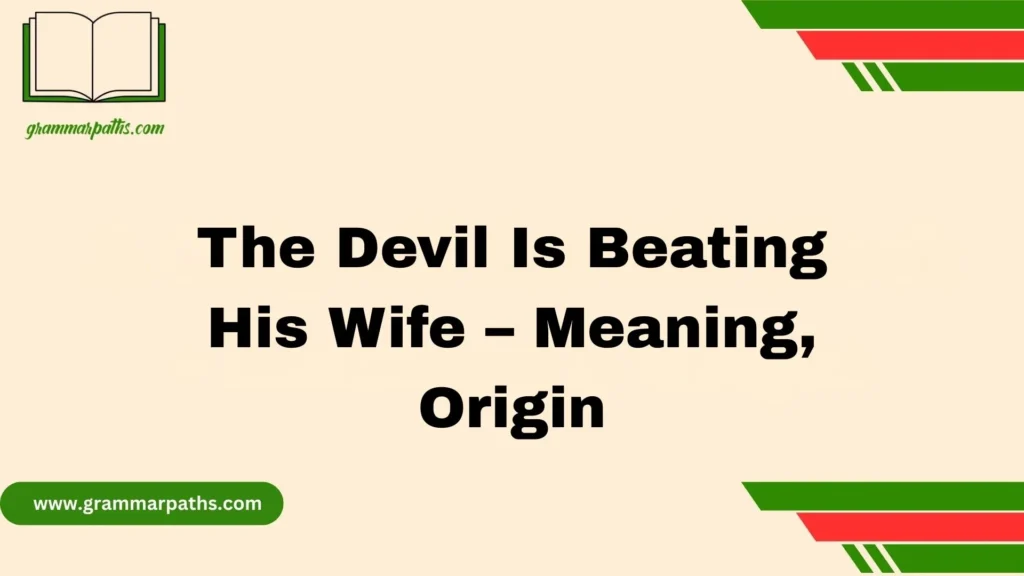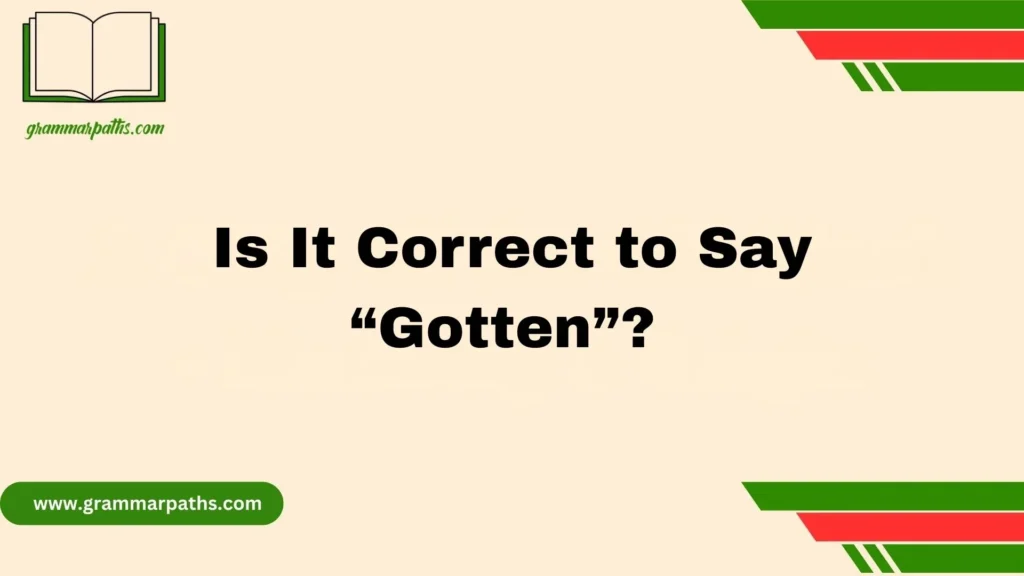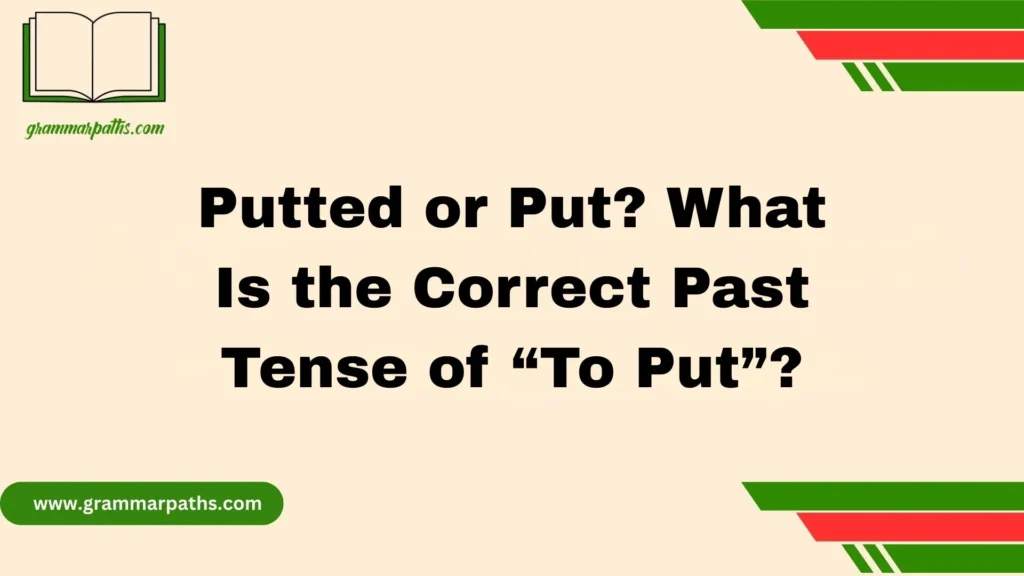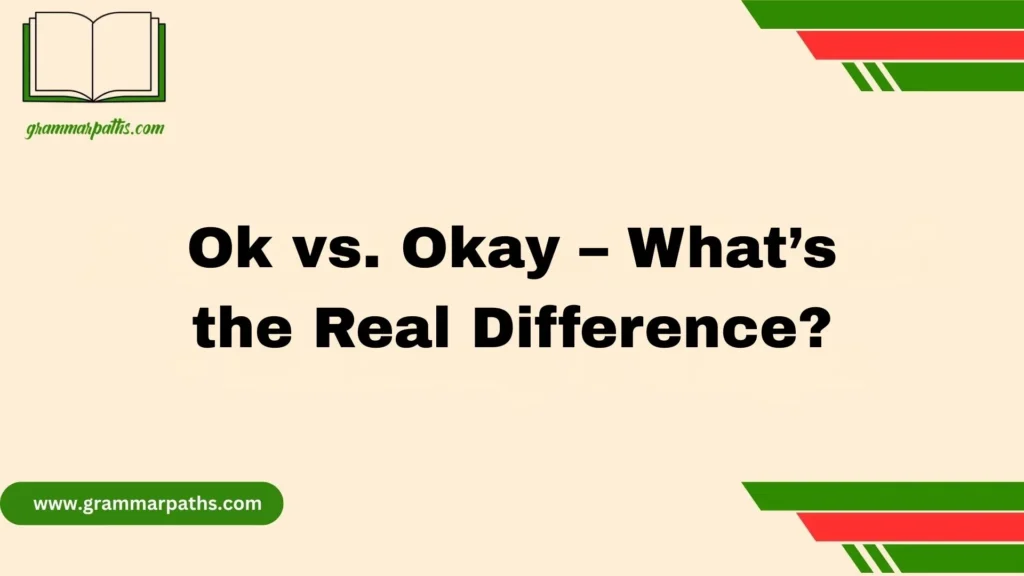The phrases “Also Has” and “Has Also” might look identical, but their grammar, meaning, and usage in English sentences can slightly differ depending on context and emphasis. Both expressions indicate addition or inclusion, helping link ideas smoothly in both spoken and written communication. However, their placement within a sentence changes the rhythm and tone of the message.
For example, “She also has a dog” places emphasis on also, suggesting something extra being added to the subject’s possessions. In contrast, “She has also a dog” sounds more formal or outdated, often used in British English or academic writing. Understanding when to use “also has” vs “has also” improves sentence fluency, clarity, and English grammar accuracy.
Why “Also Has” vs. “Has Also” Confuses Even Native Speakers
English can be a tricky language, even for fluent speakers. Tiny shifts in word placement can change the tone, clarity, or even the meaning of a sentence. One of the most common confusions arises with the phrases “also has” and “has also.”
Both seem correct, right? You’ve probably heard people say:
- She also has a car.
- She has also finished her work.
Both sentences sound fine — and both are grammatically correct. Yet, the placement of “also” subtly changes the focus and formality of each sentence. That’s where most learners (and sometimes writers) trip up.
This guide dives deep into the grammar, context, and usage differences between “also has” and “has also.” You’ll learn when to use each, how meaning shifts depending on verb type, and what modern trends say about these expressions. By the end, you’ll know exactly when to use one over the other — confidently and correctly.
The Role of “Has” in English Grammar
To understand “also has” and “has also,” you first need to get comfortable with what “has” really does in a sentence.
1. “Has” as a Main Verb
When “has” functions as a main verb, it shows possession, ownership, or experience.
Examples:
- She has a bike. (ownership)
- He has three siblings. (possession)
- The park has a new playground. (feature or characteristic)
In these sentences, “has” directly relates to something that exists or belongs to the subject.
2. “Has” as an Auxiliary Verb
When “has” acts as an auxiliary (helping) verb, it helps form the present perfect tense — showing an action that started in the past but continues or relates to the present.
Examples:
- She has completed her homework.
- He has traveled to Japan.
Here, “has” combines with a past participle (like completed, traveled, eaten, seen), forming the tense rather than showing ownership.
Understanding this distinction is vital because the correct placement of “also” depends on whether “has” is main or auxiliary.
Understanding “Also” – The Flexible Adverb
“Also” is an adverb that means “in addition,” “too,” or “as well.” But what makes it interesting is its flexibility — it can appear in several positions within a sentence, each slightly changing emphasis or tone.
Common Positions of “Also”:
- Before the main verb:
- She also likes coffee.
(Adds another thing the subject enjoys.)
- She also likes coffee.
- After the auxiliary verb:
- She has also visited Italy.
(Adds another action or experience.)
- She has also visited Italy.
- At the beginning of a clause:
- Also, she plans to study abroad.
(Adds another idea or statement.)
- Also, she plans to study abroad.
Placement Impacts Tone
- Beginning placement makes it transitional (like “furthermore” or “in addition”).
- Mid-position before the main verb makes it conversational and natural.
- After auxiliary verbs, it sounds formal or precise, often used in writing or academic tone.
So, the placement of “also” directly affects whether you say “also has” or “has also.”
Breaking Down “Also Has”
The phrase “also has” appears when “has” is the main verb, usually showing possession, characteristics, or inclusion. It’s more common in spoken English and feels natural in everyday conversations.
Correct Usage Examples
- The company also has offices in Chicago.
- She also has a brother in college.
- Our team also has experience with AI software.
Why It Works
“Also” comes before the main verb “has,” adding emphasis to the subject’s additional possession or trait. It makes the tone smooth, balanced, and easy to follow.
Common Contexts
| Context | Example |
| Describing possessions | He also has a laptop. |
| Adding features | The app also has offline mode. |
| Mentioning qualities | The school also has talented teachers. |
Tip: When describing what someone owns, possesses, or includes, “also has” is the right choice.
Dissecting “Has Also”
Now let’s flip the order.
“Has also” is used when “has” functions as an auxiliary (helping) verb — typically in perfect tenses. It adds information about completed actions, achievements, or events that relate to the present moment.
Correct Usage Examples
- She has also completed the project.
- He has also joined the new department.
- The company has also improved its policies.
Why It Works
Here, “also” follows the auxiliary verb “has” but precedes the past participle (the main verb’s third form). The emphasis shifts from possession to action.
Use in Context
| Type of Sentence | Example | Meaning |
| Professional/Academic | The government has also announced new reforms. | Adds an extra action to a list of completed ones. |
| Personal/Conversational | He has also visited Paris. | Adds another experience or achievement. |
| News/Formal Writing | NASA has also discovered new exoplanets. | Adds emphasis on additional discoveries. |
In essence, “has also” highlights what else was done, not what else exists.
“Also Has” vs. “Has Also”: A Side-by-Side Comparison
To really grasp the difference, let’s put both phrases in a comparative table.
| Feature | “Also Has” | “Has Also” |
| Verb Function | Main verb (possession, characteristics) | Auxiliary verb (perfect tense) |
| Common in | Speech, casual writing | Formal or written contexts |
| Example | The app also has a chat feature. | The app has also been updated. |
| Focus | Object or possession | Action or achievement |
| Tone | Natural, conversational | Structured, precise |
Quick Tip
“Also has” = something someone owns or includes.
“Has also” = something someone has done.
When to Use Each: Practical Grammar Guidelines
Here’s a simple decision rule:
Ask yourself — is “has” describing what exists or what happened?
Use “Also Has” when:
- You’re describing ownership, features, or qualities.
- “Has” acts as a main verb.
- The sentence is about nouns, not actions.
Examples:
- The restaurant also has outdoor seating.
- My friend also has a pet turtle.
- The phone also has wireless charging.
Use “Has Also” when:
- You’re describing an action or a completed event.
- “Has” acts as an auxiliary verb
- The sentence involves past participles (like done, made, finished).
Examples:
- The student has also submitted her paper.
- He has also learned Spanish this year.
- The system has also improved its performance.
Mini Checklist
- Does “has” show ownership? → Use “also has.”
- Does “has” help form an action verb (has done, has finished)? → Use “has also.”
Subtle Tone and Emphasis Differences
Though both phrases are correct, their placement can slightly shift emphasis and tone.
Tone Nuance Examples
| Sentence | Implied Focus |
| She also has a valid point. | Adds another point to her argument — conversational. |
| She has also made a valid point. | Emphasizes that in addition to other things, she contributed another key idea — formal tone. |
Conversational Feel
“Also has” tends to sound smoother in speech. People use it naturally when listing things:
He also has two dogs, a cat, and a fish tank.
Formal or Emphatic Feel
“Has also” fits well in writing where you want precision or academic tone:
The company has also increased funding for research.
The two aren’t interchangeable all the time — subtle but important differences keep your writing clear and natural.
Frequency and Trends: What Modern Usage Data Shows
Language evolves constantly. Tools like Google Ngram Viewer and Corpus of Contemporary American English (COCA) reveal how people actually use these phrases over time.
Usage Data (approximate based on current trends)
| Phrase | Frequency in Writing | Frequency in Speech | Trend |
| “Also has” | 60% | 70% | More common in casual and spoken English |
| “Has also” | 40% | 30% | Common in formal writing and journalism |
Insight
- “Also has” dominates in everyday conversation because people describe possessions and features more often.
- “Has also” appears more in academic, technical, and business writing, where completed actions and precise sequencing matter.
Example from Real Usage
In product descriptions, “also has” is everywhere:
“This laptop also has a fingerprint sensor.”
But in press releases, “has also” wins:
“The company has also launched an upgraded model.”
Common Mistakes and How to Avoid Them
Even native speakers sometimes misplace “also.” Here’s how to fix common slip-ups.
1. Putting “also” at the wrong spot
She has a car also. (Correct but sounds unnatural.)
She also has a car.
2. Using “has also” when describing possession
The city has also a museum.
The city also has a museum.
3. Overusing “also”
Using “also” too many times in one paragraph can make writing repetitive. Mix it with alternatives like:
- too
- in addition
- as well
- furthermore
4. Double “also” Error
She also has also finished her task.
She has also finished her task.
Advanced Usage Tips for Writers and ESL Learners
If you’re a writer or English learner, mastering word placement can elevate your fluency.
Test Your Sentence Flow
Read aloud: Does it sound natural?
- If yes, great — you’re using it right.
- If it feels forced, swap “also has” and “has also” to test which flows better.
Rewrite Exercise
Try switching between both:
- The brand also has stores in Miami.
- The brand has also opened new stores.
Both correct — but one describes existence, the other action.
Stylistic Advice
- In blog writing or conversation, prefer “also has.”
- In reports or academic papers, “has also” usually fits better.
Professional Writing Tip
Always consider what you want the reader to focus on — the thing owned or the thing done.
Quick Reference Table: Simplifying the Rules
| Context | Correct Form | Example |
| Describing possession or inclusion | Also has | The café also has free Wi-Fi. |
| Mentioning completed actions | Has also | The café has also launched a new menu. |
| Emphasizing additional achievements | Has also | She has also won multiple awards. |
| Listing multiple traits or items | Also has | The school also has a swimming pool. |
Case Study: News and Conversation Examples
Case 1 – Everyday Conversation
Maria also has a small bakery.
Here, “also has” refers to ownership — she owns something else besides her restaurant.
Case 2 – Business Announcement
TechCorp has also invested in renewable energy.
“Has also” indicates an action — the company performed an additional initiative.
Case 3 – Academic Statement
The research has also identified new patterns.
Again, the focus is on what the research did, not what it possesses.
Conclusion
Both “Also Has” and “Has Also” express addition or inclusion, but their placement within a sentence changes how naturally they read. In modern English grammar, “also has” is more common in everyday writing and conversation because it flows better and sounds more natural. On the other hand, “has also” can appear in formal, academic, or British English contexts where sentence structure tends to be more traditional.
To sound fluent, remember this simple rule: “also” usually goes before the main verb but after auxiliary verbs like has, have, or is. Understanding this subtle difference helps improve your grammar accuracy, writing style, and communication clarity.
In short, both forms are correct — it just depends on tone, context, and style.
FAQs
1. Is “also has” grammatically correct?
Yes. “Also has” is perfectly correct and widely used in modern English for smooth and natural expression.
2. When should I use “has also”?
Use “has also” in more formal writing or when you want to emphasize the verb phrase rather than the addition.
3. Which is more common, “also has” or “has also”?
“Also has” is more commonly used in spoken English and informal writing, while “has also” appears in formal or academic contexts.
4. Can I use “also” anywhere in a sentence?
Not always. Placement depends on sentence structure. It usually goes before the main verb but after auxiliary verbs.
5. Are “also,” “too,” and “as well” the same?
They all mean something similar, but “also” is more formal, “too” is casual, and “as well” fits at the end of a sentence.

Mia Rose is the passionate writer and founder of GrammarPaths.com, a resource dedicated to helping learners master English grammar, idioms, and writing skills with ease. With a deep love for language and years of experience in teaching and content creation, Mia simplifies complex grammar rules into clear, practical guides that readers can instantly apply.
